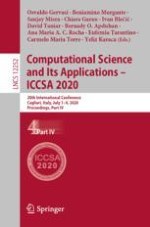2020 | OriginalPaper | Buchkapitel
Towards a High-Fidelity Assessment of Urban Green Spaces Walking Accessibility
verfasst von : Ivan Blečić, Valeria Saiu, Giuseppe A. Trunfio
Erschienen in: Computational Science and Its Applications – ICCSA 2020
Aktivieren Sie unsere intelligente Suche, um passende Fachinhalte oder Patente zu finden.
Wählen Sie Textabschnitte aus um mit Künstlicher Intelligenz passenden Patente zu finden. powered by
Markieren Sie Textabschnitte, um KI-gestützt weitere passende Inhalte zu finden. powered by
